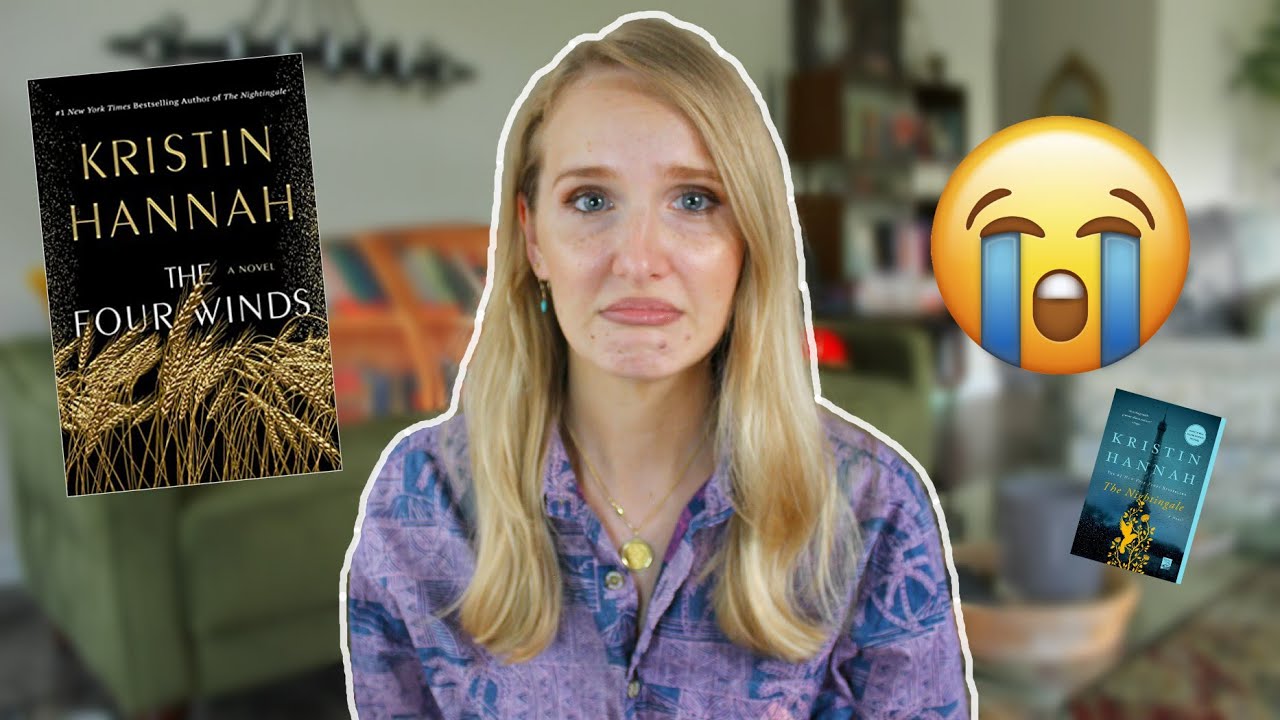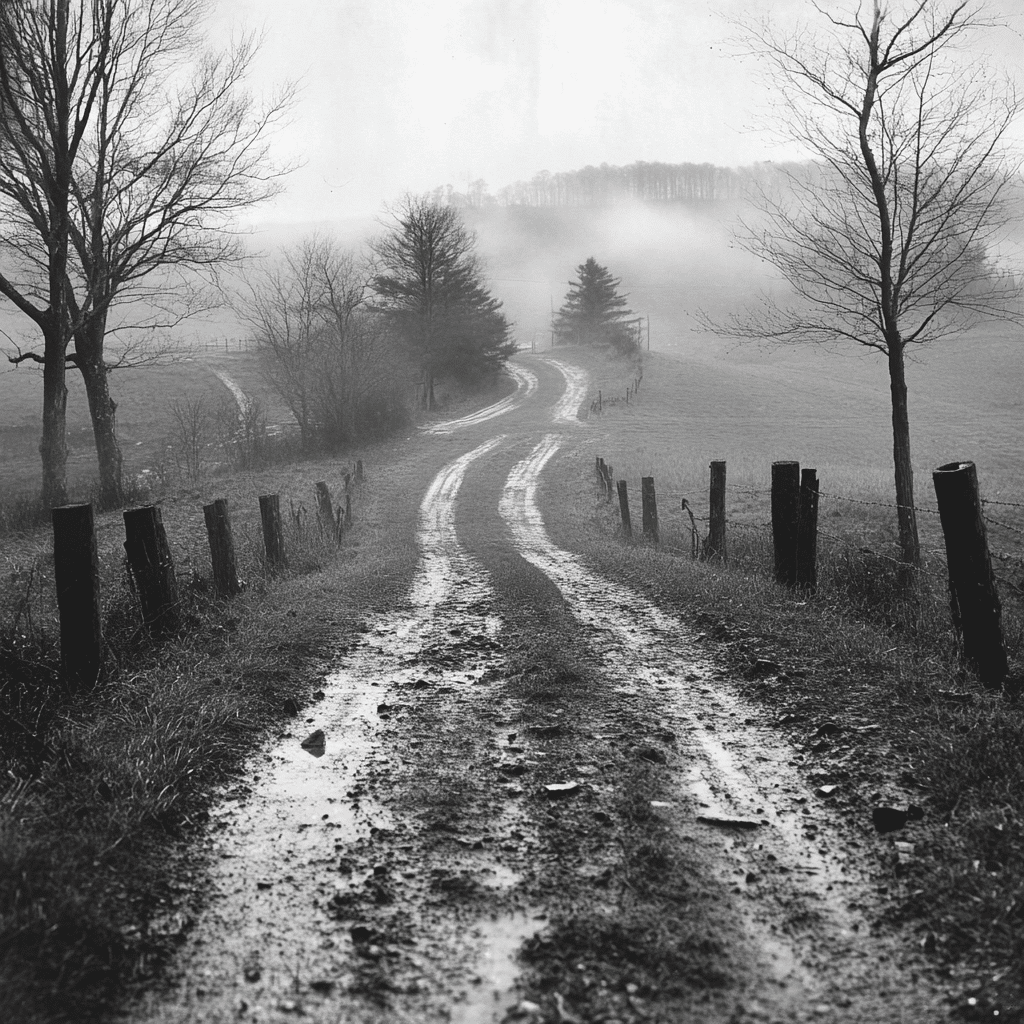The Great Depression was a brutal chapter in American history, creating a tapestry of struggle, hope, and resilience. In Kristin Hannah’s The Four Winds, this historical backdrop comes alive, offering readers a deep dive into the lives of families enduring the Dust Bowl’s relentless grip. The narrative captures the essence of resilience, showcasing not just the struggles they faced, but also the unyielding spirit that characterized the era. The Four Winds is more than a tale of hardship; it’s an exploration of how individuals, like Elsa Martinelli, rose from the ashes of despair to reclaim hope and destiny.

A Journey Through the Struggles of the 1930s
As we venture through The Four Winds, we uncover a powerful narrative centered on the plight of those grappling with adversity. The dust storms weren’t just physical phenomena; they were harbingers of despair, inflicting emotional and psychological wounds that took years to heal. Hannah lets us peek into the lives of her characters, who face unthinkable challenges while seeking a glimpse of the American Dream amid a landscape marred by poverty and prejudice.
Elsa Martinelli starts off as a tall, awkward young woman plagued by illness in her youth. But she grows to embody resilience. Through her transition from a simple farm girl to an activist fighting for the rights of “Okies” in California, we see the evolution of a character prepared to take on the world, regardless of the odds stacked against her. This intrinsic journey reflects our own struggles, reminding us that we, too, can find strength when it feels like the world is pressing us down.
In The Four Winds, the fictional town of Welty becomes a character itself, intricately woven into the fabric of the narrative. This setting represents the harsh realities experienced during the Great Depression and serves as an allegorical location for the many who experienced disenchantment as they chased after the elusive American Dream. Just like real-life figures from this period, Elsa’s story mirrors those of countless other brave souls—protesters demanding fair wages, families looking to survive, each filled with a restless courage that inspires hope.

Five Themes in The Four Winds That Resonate with Modern Audiences
Exploring The Four Winds reveals themes that echo through time, resonating with our current struggles. The narrative captures an authentic essence of human resilience, a quality still relevant today, showing us how recent events and moods reflect the same struggles faced throughout history. Let’s dive into five key themes highlighting the darkness of that era while shedding light on our potential for hope.
A Touch of Darkness: The Harsh Reality of Life in the Dust Bowl
Hannah captures the brutal nature of the Dust Bowl, depicting a world choked with despair. The characterization of darkness works both literally and metaphorically, emphasizing the shifting sands that take life and livelihood. But in that darkness also lies a shared strength—a testament to the human spirit that endures amid catastrophe.
The hardships Elsa confronts echo the plight of many today. As modern society faces economic instability, The Four Winds reminds us to meet our adversity with courage, as Elsa does. Her struggles in the face of relentless dust storms correspond to the uncertainty many feel, as they encounter challenges that threaten their homes and families.
While the era may have passed, the essence of resilience endures. When we consider realities such as inflation and economic turmoil, the struggles of the families in The Four Winds hit home hard, urging us to reflect on our own capabilities to weather storms.
Before We Were Yours: Familial Bonds and Sacrifices
The Four Winds intricately explores what it means to belong. The bond between family members serves as an anchor in turbulent times. Elsa’s relationships with her children, Loreda and the steadfast Jack Valen, illustrate the sacrifices parents make. It showcases the unbreakable connection that prompts individuals to fight for each other’s survival.
This theme resonates powerfully with modern readers, evoking narratives like Before We Were Yours, a story that, like Hannah’s work, explores familial loyalty and the extent people will go to protect their loved ones. Both novels showcase the underlying value of family during periods of great adversity, threading stories together across generations.
These narratives serve as vibrant reminders of why we fight for our families—the legacy we create is shaped through struggles and solidarity. In times of uncertainty, those bonds of shared sacrifice and support become the bedrock for resilience.
Dark and Darker Maps: Navigating Uncertainty
As characters in The Four Winds traverse the emotional landscape marked by tragedy and loss, they encounter challenges that require them to map out their paths amid chaos. This struggle isn’t merely physical; it embodies the journey of the human experience unraveling before our eyes.
Hannah’s exploration of uncertainty asks readers to confront their own dark and darker maps, reflecting the journey of many through the ups and downs of life. The symbolism of navigating these terrains goes beyond mere survival—it’s about reconciliation, acceptance, and the paths we choose amid myriad forks in the road.
Ultimately, the characters’ navigation reflects a broader understanding we gain from history. While instability may dominate, it’s in the choices they make while journeying through dark territories where growth can thrive.
Time Wasted on Destiny: The Illusion of Control
Elsa grapples with her personal journey, showcasing the eternal struggle of feeling unmoored in a world that often seems governed by the capricious hands of fate. In Hannah’s world, this interplay between free will and the weight of destiny plays a crucial role—a theme tantalizingly familiar to modern readers navigating their own uncertain lives.
As the Martinellis face prejudice and hardship, the sense of “time wasted on destiny” resonates, mirroring the frustration many feel as life’s unpredictable currents sweep them away from their desired shores. Yet, in acknowledging these constraints, characters find ways to seize control, reminding us all that while we cannot always direct the flow of events, we can respond with agency.
Amid the realities of today’s world—where decisions often feel predetermined—the characters in The Four Winds invite readers to claim their narratives, shaping their destinies with resolve and courage, as Elsa does in her activism.
Land of Illusion: The American Dream During the Great Depression
At the heart of The Four Winds resides a poignant exploration of the American Dream. When the promise of prosperity becomes an illusion, the characters confront disparities and harsh truths about their dreams. This theme, rooted in the historical context of the Dust Bowl and the Great Depression, serves as a critical lens through which to examine contemporary aspirations.
Hannah illustrates the reality that hard work alone doesn’t guarantee success or salvation. The dream can morph into a nightmarish burden when the odds are stacked against you, inevitably casting shadows over the lives of the Martinelli family as they struggle in California. The disillusionment faced becomes an essential part of their journey, highlighting societal inequalities that resonate even today.
These reflections prompt us to ask how our dreams align with reality and whether they continuously exist as a beacon of hope or, at times, a harsh reminder of unattainable goals. In understanding this, we embrace both the imperfections and possibilities behind what we define as success.

All the Fallen, Salt, and Stone: Human Resilience in Times of Struggle
The novel’s weaving of resilience amidst despair finds parallels in the annals of history, where the aftermath of the Great Depression gave rise to countless movements and figures who embodied the essence of human fortitude. Just like salt adds flavor and stone serves as a foundation, the characters in The Four Winds symbolize the endurance to rise after the fall—showcasing that every struggle bears the potential for strength and rebirth.
Elsa’s journey reflects the experiences of countless souls who braved the storms in their lives, drawing from their internal reservoirs of strength. But resilience doesn’t exist in isolation; it’s deeply rooted in community and the bonds we form, as illustrated by the support Elsa finds throughout her journey.
Moreover, like the historical significance tied to labor movements and the rights fights of the 1930s, the narrative underlines that amid adversity, shared struggles foster unity. Such solidarity becomes a source of hope, solidifying that every fallen heart has the capacity to rise anew.

Embracing the Lessons of Resilience
The Four Winds serves as a powerful reminder of the resilience inherent in humanity’s spirit. Through the sweeping saga of the Martinellis, readers are transported to a dark time, yet they are also beckoned to recognize the light borne of shared struggles, love, and community. The lessons learned from history urge us to confront our challenges with similar fervor.
As we delve into this emotional narrative, we connect with the endurance found within our families and communities—a strength that continues to shape our futures as we navigate our own life experiences, recollections, and dreams.
Let The Four Winds remind us that, despite the storms we face, the spirit of hope and resilience continues to flourish just above the horizon, waiting for us to grasp it. As we trek forward, let’s draw strength from the stories of our past, channeling that energy to forge brighter paths ahead—together, standing strong against any winds that may try to impede our journey.
In grasping both the weight of history and the power of personal narratives, we can embrace our own challenges and rise like the courageous souls found in The Four Winds, knowing that, like them, we can thrive against all odds—even amid the finest dust storms life throws our way.

The Four Winds: Trivia That Goes Beyond the Surface
Fun Facts About the Four Winds
Did you know that “The Four Winds” offers a peek into the realities of the Great Depression, capturing the resilience of everyday folks? We often think of this era as one drenched in despair, but it’s filled with stories of hope and survival, much like the tales told in shows like Bill Camp movies And TV Shows, where life’s trials and tribulations are portrayed with raw authenticity. Speaking of portrayals, actor Daniel Kountz, known for his engaging performances, often draws inspiration from characters facing tough challenges, reminding us of the enduring human spirit.
Moving beyond the hustle and bustle of the storyline, one fascinating tidbit is the intersection of culture and language showcased throughout “The Four Winds.” For instance, ever heard of “canoodle”? This playful term signifies affectionate activity, often shared during tough times as a means of comfort. In the same vein, we see characters seeking joy and connection, much like how enthusiasts enjoy the strategic dynamics found within games like League Of Legends Characters, illustrating human relationships under extreme stress.
Resilience and Realities
The film also ties to historical events that shaped and shook communities. Just imagine the societal upheaval from hoof and mouth disease back in the day; it created quite a ripple effect. Nowadays, we consider how crucial the right hoof And mouth disease treatment hand would have been then, highlighting the evolution of care and concern in agriculture—essential, since a lot of folks relied on farms during the Depression. Moreover, the intimate details shared in the narrative draw parallels to the ongoing bureaucratic challenges we still face, like those encountered turning to the Dmv Reno for services.
In the backdrop of struggles, we can’t ignore the warmth that simple gestures of kindness bring—much like sending a quick Good Morning Blessings text to lift someone’s spirits. The ability to find light in dark times remains a timeless lesson from “The Four Winds, allowing us to appreciate the small victories of the past and present as we continue to navigate the ups and downs of life. So, the next time you find yourself reflecting on resilience during tough times, remember that “The Four Winds” beautifully captures this unyielding spirit, though the road was certainly not smooth.

Is The Four Winds based on a true story?
The Four Winds isn’t a true story, but it weaves in real historical events, like the strikes from California in the thirties. The character of Elsa and her family go through struggles that reflect the experiences of many during The Great Depression and the Dust Bowl.
Is it worth reading The Four Winds?
Absolutely, The Four Winds is definitely worth a read! It’s a powerful tale filled with emotion, resilience, and the spirit of survival, making it a gripping and thought-provoking experience.
Is The Four Winds like Grapes of Wrath?
For sure, if you liked The Grapes of Wrath, you’ll probably enjoy The Four Winds too. They both deal with similar themes of hardship, migration, and the struggles of the “Okies.”
Does the book The Four Winds have a happy ending?
The ending of The Four Winds is bittersweet. While Elsa’s journey is filled with sacrifice, her children find a bit of hope and a better future, so it leaves readers with a sense of optimism amidst the struggles.
Why was it called The Four Winds?
The title The Four Winds symbolizes change, struggle, and the differing directions of life that characters face. It represents the forces shaping their destinies as they navigate the challenges of their time.
Is The Four Winds about communism?
No, The Four Winds isn’t specifically about communism. It focuses more on themes of resilience, family, and social injustice during a difficult time in American history.
Why did Kristin Hannah write The Four Winds?
Kristin Hannah wrote The Four Winds to shine a light on the struggles faced by those during the Dust Bowl and to paint a vivid picture of resilience and hope in the face of adversity.
What is the message in The Four Winds?
The message in The Four Winds revolves around hope, family bonds, and the strength of the human spirit. It shows how people can rise above challenges and fight for a better life despite overwhelming odds.
What is the plot of The Four Winds?
The plot of The Four Winds follows Elsa Martinelli as she deals with the harsh realities of The Great Depression and the Dust Bowl, including her struggles as a mother and her journey to California in search of a better life.
What does the Bible say about the four winds?
The Bible mentions winds as symbols of God’s power and control over creation, but it doesn’t specifically talk about “four winds.” Instead, references to winds often illustrate themes of change and divine influence.
Is The Grapes of Wrath a must read?
The Grapes of Wrath is generally considered a must-read for its powerful commentary on social issues during the Great Depression, much like The Four Winds.
Who reads the Four Winds?
The Four Winds appeals to a wide range of readers. Fans of historical fiction, those interested in family sagas, and anyone drawn to stories about resilience and human spirit will enjoy it.
How old is Elsa in The Four Winds?
Elsa is twenty-five years old at the start of The Four Winds, and her character grows and changes significantly throughout the story as she faces various challenges.
Is there a love story in The Four Winds?
Yes, there’s definitely a love story in The Four Winds. It explores complex relationships and the bonds formed during tough times, adding depth to the characters’ journeys.
What happened to Jean in The Four Winds?
In The Four Winds, Jean’s fate is tied to the struggles of the family, and while she faces challenges similar to other characters, her journey reflects the broader narrative of resilience and hope amidst hardship.



























